
PAINTING WITHOUT A NET
THIS NEW GROUP of paintings began with an experiment in abstract plein air: instead of drawing my inspiration from the surrounding scene, I focused on my inner mood.
I was in an unfamiliar place: in a large barn, in a small crowd, with a lot of eyes watching me. I talked as I painted, trying to project and give language to my actions while maintaining my focus on the canvas, absorbing and transforming in paint something of the distinctive energy around me.
It was both thrilling and terrifying to try to paint something coherent in this setting, outside the privacy (and comfort) of my studio. I had to summon an emotional, rather than visual, response to my environment, in real time, and share it unfiltered and unedited, with strangers. It was a lesson in trust.

APERTURES AND OPENINGS
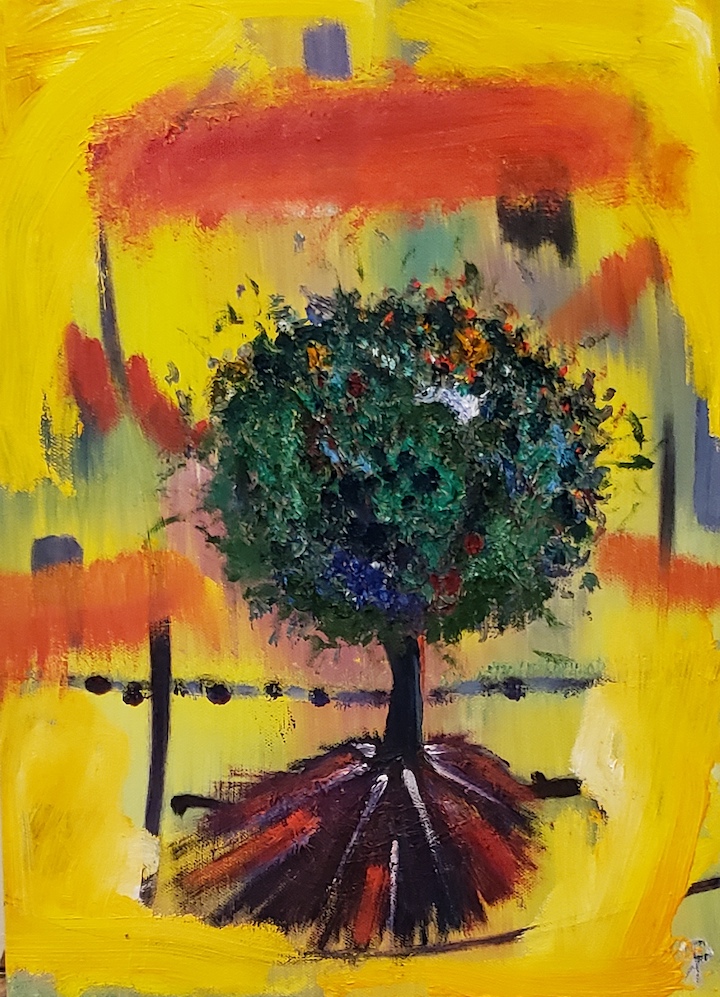
BACK HOME at my easel, I unconsciously warmed up for what eventually became a series. I started by scraping and smushing paint on a small canvas of a tree that had vexed me for weeks. It couldn’t get worse. It did get better.
New paintings followed. In succession: “First Light,” “Seane,” and “Both Sides of the Fence.”


In hindsight, each anticipates the series, the first two, odes to nature, for their limited and darker palettes, the latter for presenting multiple points of view.

THE PREMISE behind the subsequent series, “Apertures and Openings,” was not entirely new to me. In 2016, “Forty-one Love Poems” started out as an attempt to cover a poor underpainting and eventually became a series of intimate, interconnected scenes.
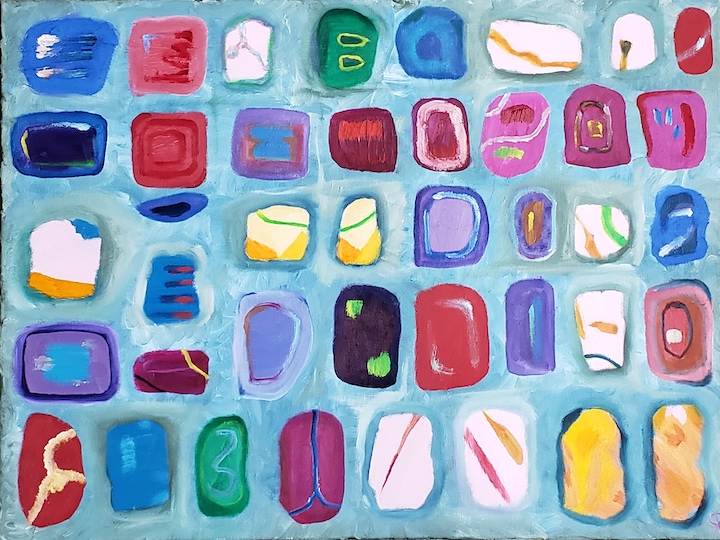
Earlier this year I posted a series, “Emily’s Window,” imagining what the famous Amherst poet saw looking out her bedroom window in different moods and at different times of year. Just a month ago, I painted “Nine Panes.” These paintings attempt to draw attention to the intersection of what we see and what we feel.

Breaking down a large scene into a series of small ones allows for dozens of individual narratives within a harmonious whole. It focuses attention on the rich details of experience that are often overlooked in our haste.
These small details in nature sustain us, from bacteria on up, providing interest and beauty in unusual places. The apertures and openings are a way of looking in, seeing the world more closely around us, while simultaneously focusing attention on the viewer.
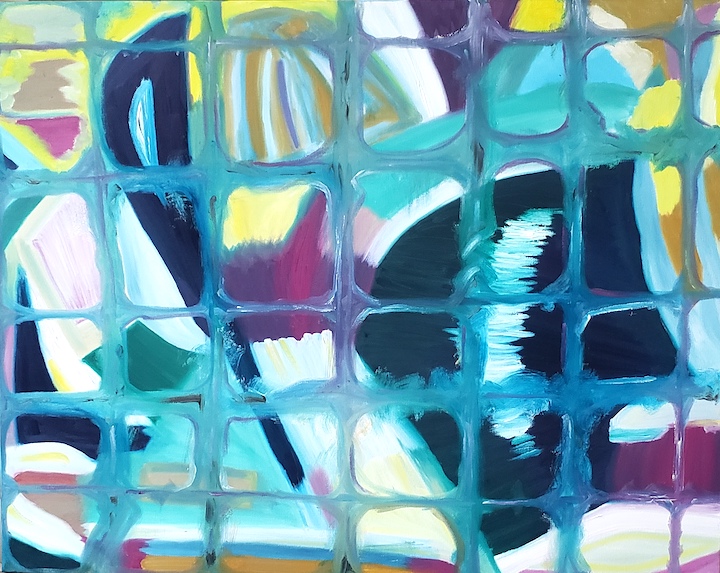
NOW I WAS READY to try something deliberate along these lines. In “Aperture 1,” I painted an abstract scene first with the distinct intention of painting a screen over it, creating multiple perspectives: the distant scene, its many framed parts, the grid itself, and the person looking through it.
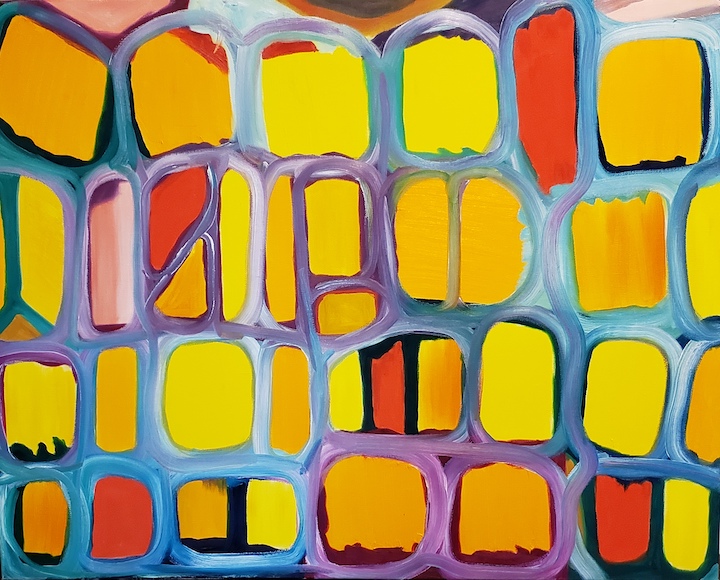
In “Aperture 2,” the colors and shapes are bolder and more defined.
“Aperture 3” has a similar theme but with a limited palette, all in the purple range.

The rest of the series is presented here in the order in which it was painted.

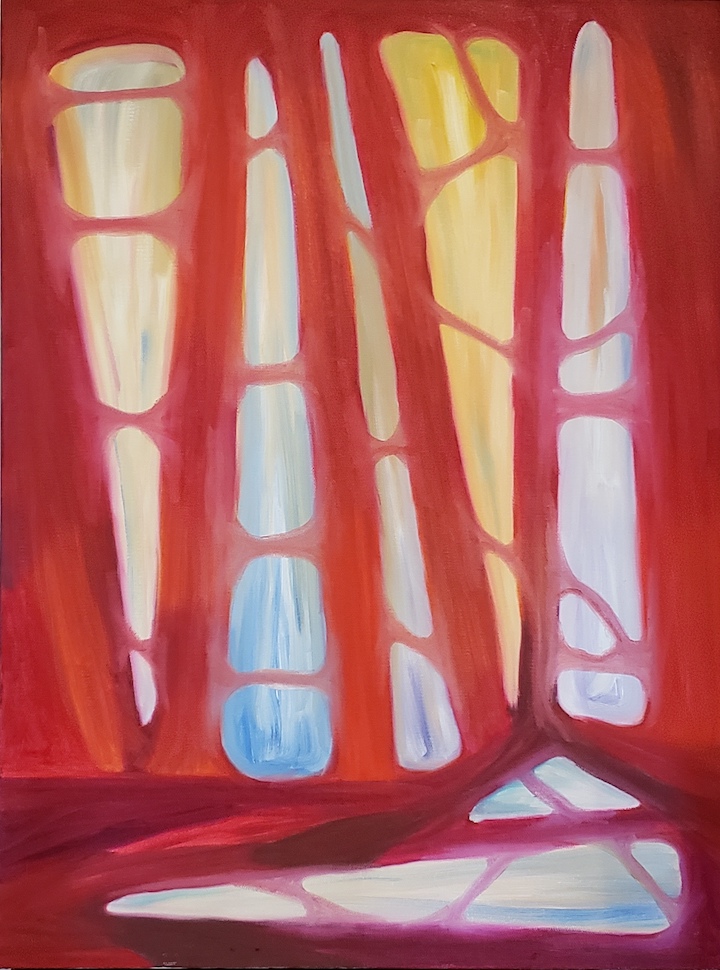

And one straggler, below not part of any series.


Thank you. Your colorful images always make me happy!
Thank you Diane! Much appreciated …